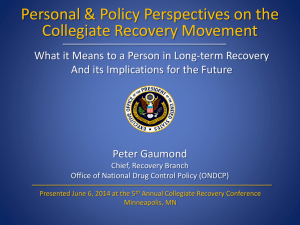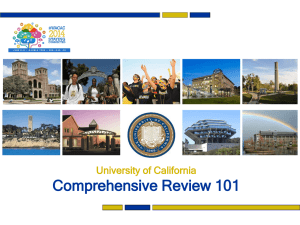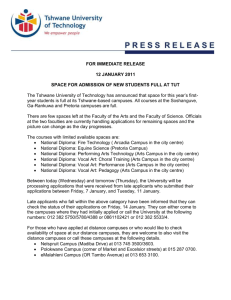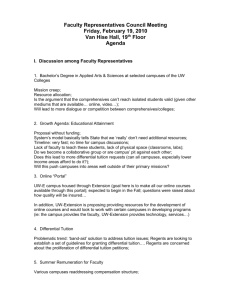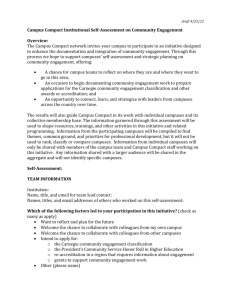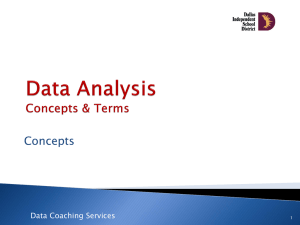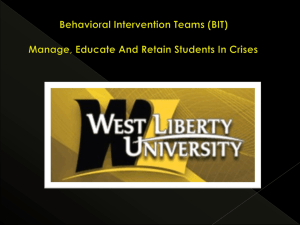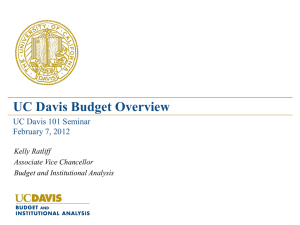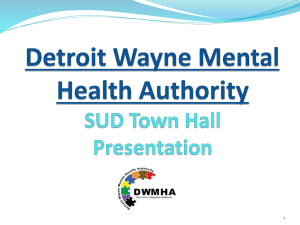President Barack Obama
advertisement
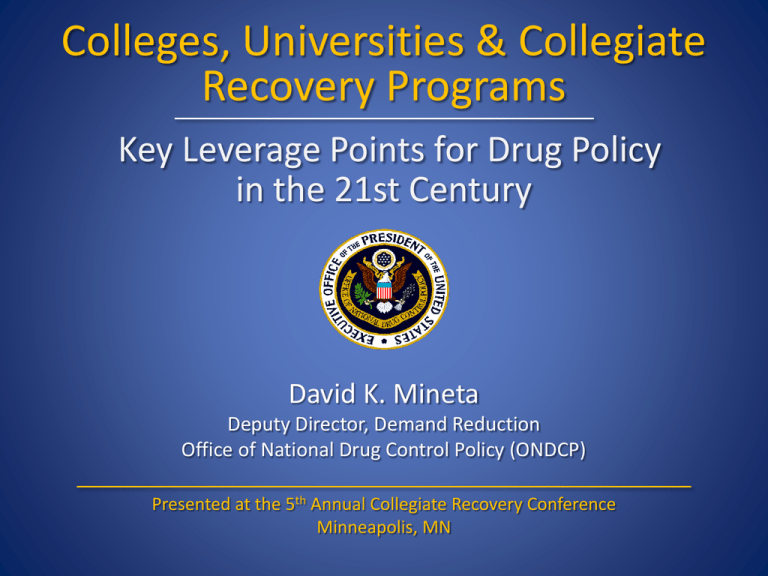
Colleges, Universities & Collegiate Recovery Programs Key Leverage Points for Drug Policy in the 21st Century David K. Mineta Deputy Director, Demand Reduction Office of National Drug Control Policy (ONDCP) Presented at the 5th Annual Collegiate Recovery Conference Minneapolis, MN A 21st Century Drug Policy “[T]his Administration remains committed to a balanced public health and public safety approach to drug policy.” - President Barack Obama Source: NIDA – Introduction to the Brain A 21st Century Drug Policy • Stop drug use before it starts & intervene early (prevention, early intervention) • Integrate with other sectors (primary care, campus health centers, etc.) using SBIRT • Expand access to treatment, including medication (buprenorphine, methadone, naltrexone) • Raise awareness of substance use disorders (SUD) and recovery • Expand access to recovery support services • Prevent & reverse overdose SUD Prevalence – Young Adults • In 2012, 22.2 million Americans aged 12 or older had a substance use disorder in the past year (8.5 percent of the population aged 12 or older). Percent SUD by Age Group - 2012 18.9% 20.0% 18.0% 16.0% 14.0% 12.0% 10.0% 7.0% 6.1% 8.0% • 6.1 percent of young people aged 12-17 had already developed a substance use disorder. 6.0% 4.0% 2.0% 0.0% 12-17 18-25 26 + Data Source: SAMHSA (2013). Results from 2012 NSDUH. • Nearly 1 of 5 (18.9 percent) of young adults aged 18 to 25 had a past year substance use disorder. Cost of Substance Use • 2006 - excessive drinking in the United States resulted in $223 billion in lost productivity, healthcare, and criminal justice costs.1 • 2007 - Illicit drug use cost the Nation an estimated $193 billion related to health care, crime, and lost productivity.2 • 2010 - An average of about 100 Americans died from overdose every day. Drug poisoning deaths, driven by prescription painkillers, now surpass homicides and traffic crashes as the leading cause of injury death in America.3 1. Bouchery et al (2011) Economic costs of excessive alcohol consumption in the U.S., 2006. Am J Prev Med 41 (5): 516-524 2. United States Department of Justice, National Drug Intelligence Center. (2011) The Economic Impact of Illicit Drug Use on American Society. Washington, DC. 3. Centers for Disease Control and Prevention, National Center for Health Statistics. Underlying Cause of Death 2000-2010 on CDC WONDER Online Database. Extracted December 12, 2012. Opioid Epidemic • 2012 -12.5 million people used a prescription opioid non-medically in the past year (669,000 used heroin). • Approximately 4 percent of non-medical users of prescription opioids transition to heroin within 5 years of first non-medical use of RX opioids.1 1 Muhuri, PK; Gfroerer, JC; and Davies, MC. 2013. Associations of nonmedical pain reliever use and initiation of heroin use in the United States. CBHSQ Data Review. SAMHSA. Campus as Nexus of Public Health Response • If almost 1 of 5 college-age people have a past year SUD, why aren’t we finding them? – Need universal screening, brief intervention, or referral to treatment and supports – Cultural norms and expectations – Institutional resistance – Stigma – Flight from campus? Collegiate Recovery Communities • Critical component of a comprehensive response to drug use and substance use disorders on college campuses • Need to: – Learn to expand reach to a greater portion of those in or seeking recovery – Explore the extent to which CRPs can have a positive affect on campus norms and expectations Collegiate Recovery Communities • Vibrant and attractive campus communities • Diverse, tolerant, informed by an ethic of service • Anchored in the student community and recognized as a vehicle for positive social engagement & leadership development • Safe – Where I can go and not be judged or pressured Moving Forward • Potential for CRPs to begin transforming the face of college campuses in the future • Need for comprehensive campus-wide approaches, including screening, information, advice, and intervention • Opportunity for students to take leadership role in building healthier, more resilient campuses for themselves and their peers • Chance to inform policy, practice, and campus life nationally Q & A / Discussion David K. Mineta Deputy Director, Demand Reduction Office of National Drug Control Policy (ONDCP) dmineta@ondcp.eop.gov
